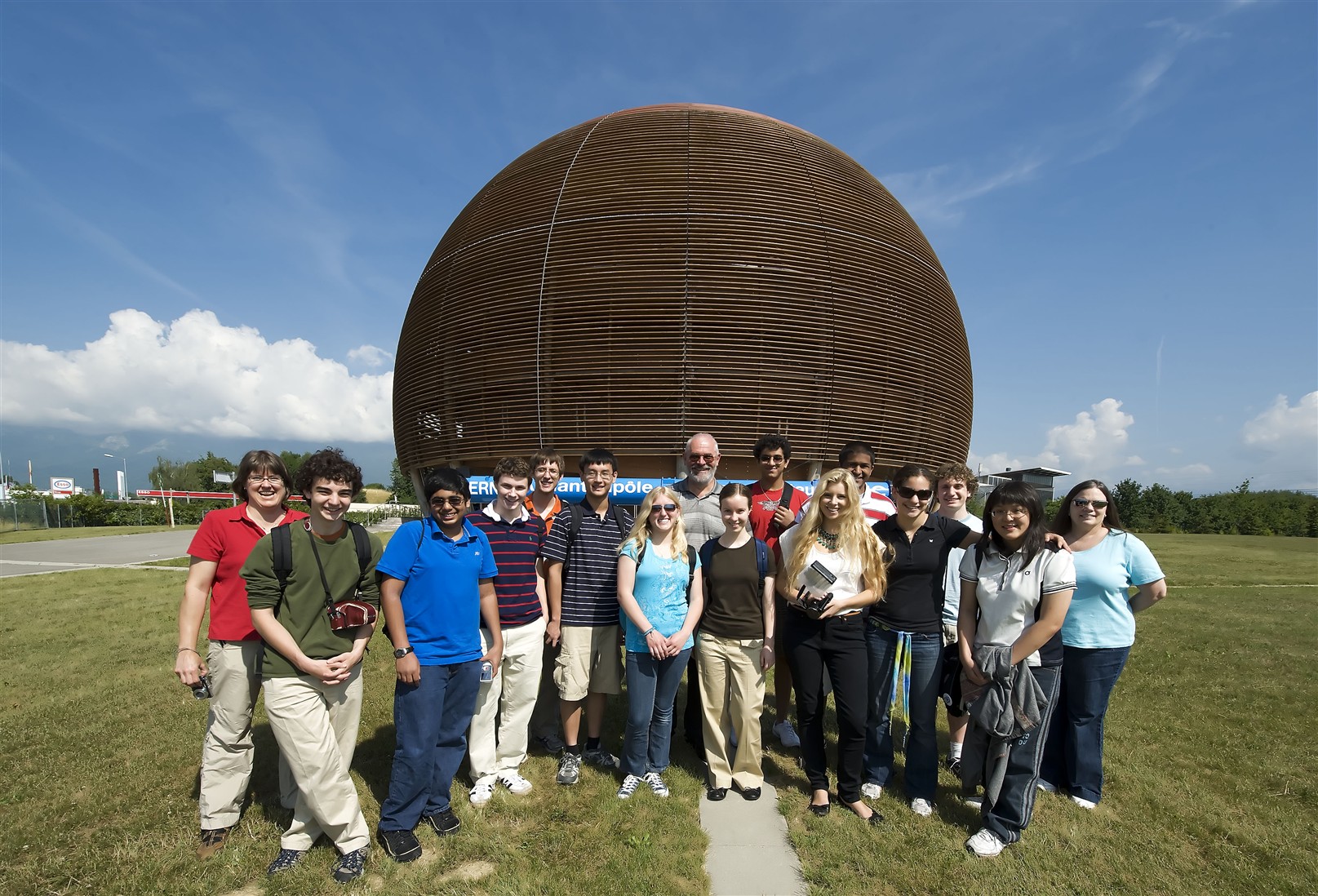Wisdom comes with age?
‘A relativistic generalization of the Navier-Stokes equations to quark-gluon plasmas’ – the work of a CERN physicist perhaps? No, actually it is the title of a high school student’s project! Thirteen of the world’s brightest young scientific minds were recently treated to a tour of CERN. The Bulletin finds out more.

Thirteen science wunderkinds came to CERN for a three-day visit on 29 June. The high school students, aged between 16 and 18, were all winners of this year’s Intel International Science and Engineering Fair (Intel ISEF), the world’s largest pre-college science competition. As part of their prize they won a visit to CERN organized by the CERN openlab collaboration (see box).
"The whole trip has been incredible, and this is my first time in Europe as well so that makes it even more exciting," said Ryan Alexander, just 16 years old, who won in the Energy and Transportation category for his research into cheap and easily built devices that capture wind energy. "I worked on a new sort of windmill that uses aeroelastic flutter to generate electricity, then I designed a version that could be made cheaply out of bamboo. So one of the things that interested me was how work done at CERN could be applied in future energy research."
The students were given a comprehensive tour of CERN, visiting CLIC, the antimatter experiments, the ATLAS visitor centre, the CERN Control Centre (CCC) and the Computing Centre. But for most the highlight of the trip was a guided tour of the CMS cavern by Jim Virdee, CMS Spokesperson, who spoke at this year’s ISEF opening ceremony, held in Nevada, United States. "I’ve always been interested in particle physics, so I’ve seen loads of pictures of CERN, but to actually go down and see CMS in real life was just amazing," said Erika DeBenedictis, who created a novel way of identifying asteroids from astronomical images, "and the best bit was that we could ask questions about it as we were given the tour."
Did you know?
CERN openlab is a framework for collaboration between CERN and industry, welcoming major industrial partners (HP, Intel, Oracle and Siemens). These partners bring equipment, solutions, experts, as well as funding to hire young engineers and scientists. In turn, CERN provides a demanding computing environment to stress solutions and push cutting-edge technologies to their limits.
The programme has operated in 3-year phases, starting in 2003 with openlab–I, which focused on the development of an advanced prototype called opencluster. openlab–II addressed a range of domains from platforms, databases and Grid to security and networking. Disseminating the expertise and knowledge has also been a key focus. The third phase, which started in 2009, involves projects from four Competence Centres – Automation and Controls, Database, Networking, and Platform - in collaboration with HP, Intel, Oracle and Siemens.
The students who came to CERN had all won the "best of category" awards, each representing a different area of science. But even the non-physicists were still inspired by their visit. "I’m a biologist, not a physicist, but the incredible thing about CERN is that you don’t need to understand the science in order to understand collaboration!" said Ronit Abramson, who won the best in Cellular and Molecular Biology category with her project: ‘Cell wall formation from marine diatom protoplasts: implications for novel transformation and nanotechnology techniques’. "Walking around the CERN canteen and hearing so many languages, it’s incredible," she continued, "there’s something about coming to this place, it’s really like a city of research."
Among the other winning projects were an investigation of Styrofoam-digesting microbes, a new computer program that splits tasks among computer chips, and even research into therapeutic treatments for prostate cancer. More information about the Intel ISEF is available on the website: http://www.societyforscience.org/ISEF/

